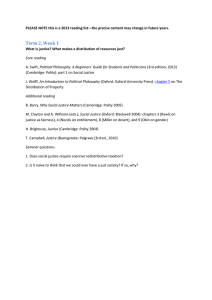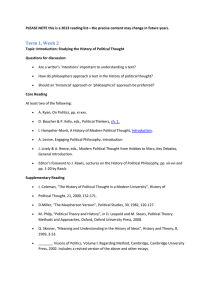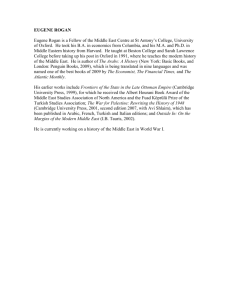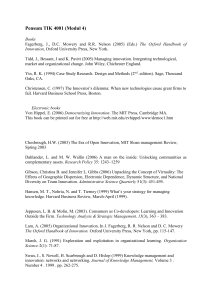PLEASE NOTE this is a sample reading list for the... – precise seminar content may change from year to year.
advertisement
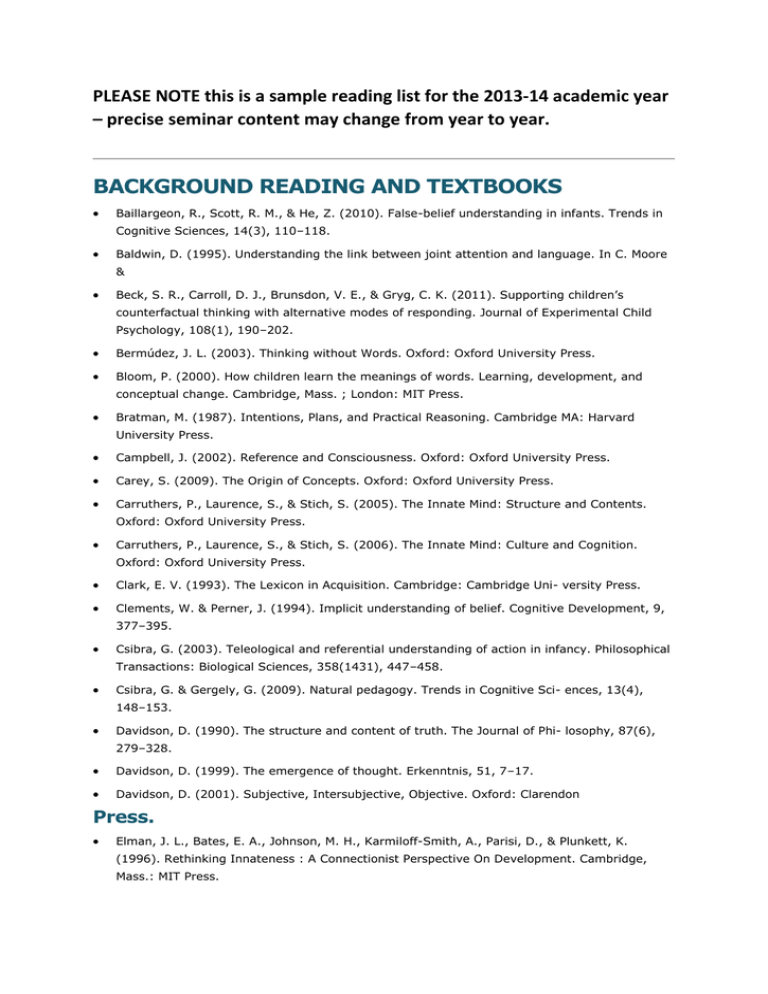
PLEASE NOTE this is a sample reading list for the 2013-14 academic year – precise seminar content may change from year to year. BACKGROUND READING AND TEXTBOOKS Baillargeon, R., Scott, R. M., & He, Z. (2010). False-belief understanding in infants. Trends in Cognitive Sciences, 14(3), 110–118. Baldwin, D. (1995). Understanding the link between joint attention and language. In C. Moore & Beck, S. R., Carroll, D. J., Brunsdon, V. E., & Gryg, C. K. (2011). Supporting children’s counterfactual thinking with alternative modes of responding. Journal of Experimental Child Psychology, 108(1), 190–202. Bermúdez, J. L. (2003). Thinking without Words. Oxford: Oxford University Press. Bloom, P. (2000). How children learn the meanings of words. Learning, development, and conceptual change. Cambridge, Mass. ; London: MIT Press. Bratman, M. (1987). Intentions, Plans, and Practical Reasoning. Cambridge MA: Harvard University Press. Campbell, J. (2002). Reference and Consciousness. Oxford: Oxford University Press. Carey, S. (2009). The Origin of Concepts. Oxford: Oxford University Press. Carruthers, P., Laurence, S., & Stich, S. (2005). The Innate Mind: Structure and Contents. Oxford: Oxford University Press. Carruthers, P., Laurence, S., & Stich, S. (2006). The Innate Mind: Culture and Cognition. Oxford: Oxford University Press. Clark, E. V. (1993). The Lexicon in Acquisition. Cambridge: Cambridge Uni- versity Press. Clements, W. & Perner, J. (1994). Implicit understanding of belief. Cognitive Development, 9, 377–395. Csibra, G. (2003). Teleological and referential understanding of action in infancy. Philosophical Transactions: Biological Sciences, 358(1431), 447–458. Csibra, G. & Gergely, G. (2009). Natural pedagogy. Trends in Cognitive Sci- ences, 13(4), 148–153. Davidson, D. (1990). The structure and content of truth. The Journal of Phi- losophy, 87(6), 279–328. Davidson, D. (1999). The emergence of thought. Erkenntnis, 51, 7–17. Davidson, D. (2001). Subjective, Intersubjective, Objective. Oxford: Clarendon Press. Elman, J. L., Bates, E. A., Johnson, M. H., Karmiloff-Smith, A., Parisi, D., & Plunkett, K. (1996). Rethinking Innateness : A Connectionist Perspective On Development. Cambridge, Mass.: MIT Press. Fodor, J. (1981). The present status of the innateness controversy. In Repre-sentations. Brighton: Harvester. Fodor, J. (1983). The Modularity of Mind: an Essay on Faculty Psychology. Bradford book. Cambridge, Mass ; London: MIT Press. Franklin, A., Catherwood, D., Alvarez, J., & Axelsson, E. (2010). Hemispheric asymmetries in categorical perception of orientation in infants and adults. Neuropsychologia, 48(9), 2648– 2657. Franklin, A., Clifford, A., Williamson, E., & Davies, I. (2005). Color term knowledge does not affect categorical perception of color in toddlers. Journal of Experimental Child Psychology, 90(2), 114–141. Goldin-Meadow, S. (2003). The resilience of language : what gesture creation in deaf children can tell us about how all children learn language. Essays in developmental psychology. New York, N.Y.: Psychology Press. Hirschfeld, L. A. & Gelman, S. A. (1994). Mapping the Mind: Domain specificity in cognition and culture. Cambridge: Cambridge University Press. Hoerl, C., McCormack, T., & Beck, S. R. (Eds.). (2011). Understanding Counterfactuals, Understanding Causation: Issues in philosophy and psychology. Oxford University Press. Johnson, M. H. (2005). Developmental Cognitive Neuroscience, 2nd Edition. Oxford: Blackwell. Jusczyk, P. (1997). The Discovery of Spoken Language. Cambridge, Mass.: MIT. Whiten, A. (Ed.), Natural Theories of the Mind: evolution, development and simulation of everyday mindreading. Oxford: Blackwell.

